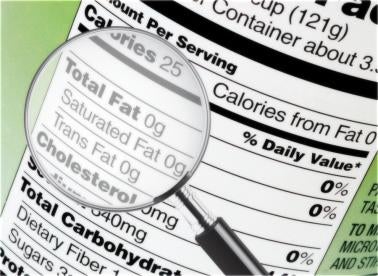On November 6, 2015, the Food and Drug Administration (FDA) issued long-awaited guidance on its fortification policy for adding nutrients to foods in the form of a Questions and Answers Guidance for Industry. The FDA originally issued the fortification policy more than 30 years ago, in 1980, to “promote the rational addition of nutrients to foods in order to preserve a balance of nutrients in the diet of American consumers.” The fortification policy was then amended in 1993 to conform to the Reference Daily Intakes and Reference Daily Values issued by the FDA. However, this new announcement is the first time since 1980 that the FDA has provided guidance specifically on the fortification policy. The underlying principle of the fortification guidelines is to provide a uniform nutritional benefit to consumers without misleading consumers to believe that the fortified food will provide a complete and nutritionally sound diet.
The policy provides guidance on how to properly fortify food with vitamins and minerals, so as to avoid indiscriminate fortification of foods. For example, the FDA has issued Warning Letters stating that it is inappropriate to fortify snack foods and carbonated beverages. Additionally, the new guidance states that fortification of snack foods, including unsweetened carbonated beverages and low-calorie and calorie-free snack foods, “could mislead consumers to believe that substitution of naturally nutrient dense foods with fortified snack foods would ensure a nutritionally adequate diet.” For the same reason, FDA states it is inappropriate to fortify alcoholic beverages.
FDA states that foods may be fortified to correct a dietary insufficiency, restore nutrient levels to those prior to storage, handling, and processing, provide a balance of vitamins, minerals, and protein in proportion to the total caloric content of the food, or prevent nutrient inferiority in a food that replaces a traditional food in the diet. The guidance addresses foods and nutrients covered under the fortification policy, principles of fortification for specific purposes, labeling claims, and enforcement.
The FDA specifically identifies two nutrient content claims that have been incorporated as regulations and have the force and effect of law:
-
“more” and its synonyms – “fortified,” “enriched,” “added,” “extra,” and “plus” (21 C.F.R. § 101.54(e)); and
-
“healthy” and related terms such as “healthful” and “healthier” (21 C.F.R. § 101.65(d)(iv)).
While the FDA has consistently issued Warning Letters for violations of nutrient content claims of “more” and “healthy,” this guidance document could imply that violation of the fortification policy may be included with greater frequency in FDA Warning Letters. The increased level of guidance and awareness of the fortification policy and potentially associated Warning Letters may stimulate related class-action suits for improperly fortified foods.


 i
i


